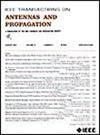高频通信的时空MUF推理:一个个性化的联邦学习框架
IF 5.8
1区 计算机科学
Q1 ENGINEERING, ELECTRICAL & ELECTRONIC
引用次数: 0
摘要
高频通信由于其跨视界传播的能力,在军事和商业领域都是至关重要的。准确预测最大可用频率是提高高频电离层传播效率的关键。然而,当用于垂直电离层探测的地面站数量有限时,在不熟悉的区域推断和预测muf就变得具有挑战性。在本文中,我们提出了一个个性化的联邦学习框架,该框架利用互信息对跨多个站点的muf进行时空推断。首先,我们使用时间序列分解理论提取趋势分量,然后使用动态时间翘曲(DTW)验证其显著的空间相关性。这使我们能够识别联邦学习系统的局部模型中存在的空间关系。接下来,通过监测趋势分量训练阶段不同局部模型间互信息的变化,我们验证了这些空间关系的存在。此外,我们还介绍并验证了该框架中所采用的个性化策略的有效性。最后,实验结果表明,该框架显著降低了10个不同地理纬度城市的MUF预测的均方根误差(RMSE)和平均绝对误差(MAE)。本文章由计算机程序翻译,如有差异,请以英文原文为准。
Spatiotemporal MUF Inference for HF Communications: A Personalized Federated Learning Framework
High-frequency (HF) communications are vital in both military and commercial fields due to their ability to propagate across the horizon. Accurately predicting the maximum usable frequency (MUF) is crucial for improving the efficiency of HF ionospheric propagation. However, when there are only a limited number of ground-based stations for vertical ionospheric sounding, it becomes challenging to infer and predict MUFs in unfamiliar territories. In this article, we present a personalized federated learning framework that utilizes mutual information to make spatiotemporal inferences for MUFs across multiple stations. To begin with, we extract the trend component using time-series decomposition theory and then verify its significant spatial correlation using dynamic time warping (DTW). This enables us to identify the spatial relationships present in the local models of the federated learning system. Next, by monitoring changes in mutual information among different local models during the training phase of the trend component, we verify the existence of these spatial relationships. Furthermore, we introduce and validate the effectiveness of the personalization strategy employed in the proposed framework. Finally, experimental results demonstrate that the proposed framework significantly reduces the root mean square error (RMSE) and mean absolute error (MAE) in MUF predictions for ten cities with varying geographic latitudes.
求助全文
通过发布文献求助,成功后即可免费获取论文全文。
去求助
来源期刊
CiteScore
10.40
自引率
28.10%
发文量
968
审稿时长
4.7 months
期刊介绍:
IEEE Transactions on Antennas and Propagation includes theoretical and experimental advances in antennas, including design and development, and in the propagation of electromagnetic waves, including scattering, diffraction, and interaction with continuous media; and applications pertaining to antennas and propagation, such as remote sensing, applied optics, and millimeter and submillimeter wave techniques

 求助内容:
求助内容: 应助结果提醒方式:
应助结果提醒方式:


